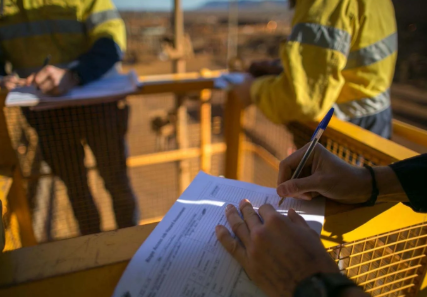What Is Environmental Permitting and Why Is It Important?
Environmental permitting is a legal process requiring businesses to obtain approval before activities that may impact air, water, soil, or wildlife. It balances economic development with environmental protection, ensuring public health and ecological integrity. From manufacturing plants to wastewater facilities, understanding this system helps businesses meet compliance while supporting environmental goals.
Understanding Environmental Permitting
Environmental permitting is a regulatory mechanism that requires individuals, businesses, and organizations to obtain government approval before undertaking activities that may affect the environment. These permits establish specific conditions and limitations designed to minimize environmental harm while allowing necessary economic activities to proceed.
The permitting system operates under the principle that certain activities pose inherent risks to environmental quality. Rather than prohibiting these activities entirely, regulators use permits to control how they’re conducted. This approach allows for economic growth while maintaining environmental standards that protect public health and natural resources.
Permits typically include detailed requirements about operational procedures, emission limits, monitoring protocols, and reporting obligations. They also establish consequences for non-compliance, creating strong incentives for permit holders to follow environmental regulations carefully.
Types of Environmental Permits
Air Quality Permits
Air quality permits regulate emissions from stationary sources like factories, power plants, and manufacturing facilities. These permits set limits on the types and quantities of pollutants that can be released into the atmosphere. They also require companies to install specific pollution control technologies and conduct regular emissions monitoring.
The Clean Air Act serves as the primary federal legislation governing air quality permits, though states often implement their own additional requirements. Major sources of air pollution typically require more comprehensive permits with stricter monitoring and reporting requirements.
Water Discharge Permits
Water discharge permits control the release of pollutants into rivers, lakes, oceans, and groundwater systems. The National Pollutant Discharge Elimination System (NPDES) program manages these permits at the federal level, though many states have received authorization to administer their own programs.
These permits specify acceptable pollutant levels, discharge locations, and treatment requirements. Industries that generate wastewater must often install treatment systems to meet permit conditions before releasing water back into the environment.
Waste Management Permits
Waste management permits govern the treatment, storage, and disposal of hazardous and non-hazardous waste materials. These permits ensure that waste handling facilities operate safely and don’t pose risks to surrounding communities or ecosystems.
The Resource Conservation and Recovery Act (RCRA) provides the framework for hazardous waste permitting, while individual states typically regulate non-hazardous waste facilities. Permits for waste management facilities often include requirements for liner systems, groundwater monitoring, and financial assurance for cleanup costs.
Construction and Development Permits
Construction and development permits address environmental impacts associated with building projects and land development. These permits often focus on stormwater management, wetland protection, and habitat preservation.
The National Environmental Policy Act (NEPA) requires environmental impact assessments for major federal projects, while state and local governments typically regulate smaller developments through their own permitting systems.
The Environmental Permitting Process
Application Development
The permitting process begins with a comprehensive application that documents proposed activities and their potential environmental impacts. Applicants must provide detailed technical information about their operations, including engineering plans, environmental assessments, and proposed mitigation measures.
This phase often requires significant time and resources, as applicants must gather extensive data about baseline environmental conditions, conduct modeling studies, and develop detailed operational plans. Many organizations work with environmental consultants to ensure their applications meet regulatory requirements.
Agency Review and Public Participation
Regulatory agencies review permit applications to determine whether proposed activities comply with applicable environmental standards. This review process involves technical analysis of the application materials, site inspections, and evaluation of potential environmental impacts.
Most permitting processes include opportunities for public participation, allowing community members and stakeholders to comment on proposed permits. Public hearings may be held for controversial or high-profile projects, giving citizens a voice in decisions that could affect their communities.
Permit Issuance and Conditions
If an application meets regulatory requirements, agencies issue permits with specific conditions designed to minimize environmental impacts. These conditions might include emission limits, operational restrictions, monitoring requirements, and reporting obligations.
Permit conditions are legally binding, and violations can result in significant penalties including fines, operational shutdowns, and criminal charges in severe cases. Successful permit holders must maintain ongoing compliance with all permit conditions throughout their operations.
Why Environmental Permitting Matters
Protecting Public Health
Environmental permitting plays a crucial role in protecting public health by controlling exposure to harmful pollutants. Air quality permits limit emissions of toxic substances that can cause respiratory problems, cancer, and other health issues. Water discharge permits prevent contamination of drinking water sources and recreational waters.
Without effective permitting systems, communities would face significantly higher risks from industrial pollution and environmental hazards. The permitting process ensures that health protection remains a primary consideration in environmental decision-making.
Read Also: The Future of Cummins Technology in Singapore: Innovations and Developments
Preserving Natural Resources
Environmental permits help preserve valuable natural resources by establishing limits on resource consumption and environmental degradation. Water use permits prevent over-extraction of groundwater and surface water resources. Habitat protection permits preserve critical wildlife areas and biodiversity.
These protections ensure that natural resources remain available for future generations while supporting current economic needs. The permitting system creates a framework for sustainable resource management that balances multiple competing interests.
Ensuring Regulatory Compliance
Environmental permitting creates clear expectations for businesses and organizations regarding their environmental responsibilities. Permits establish specific, measurable requirements, including water quality compliance, that companies must meet, reducing uncertainty about regulatory compliance.
This clarity benefits both regulators and the regulated community by providing definitive standards for environmental performance. Companies can design their operations to meet permit requirements, while regulators can focus enforcement efforts on clear violations of established standards.
Supporting Environmental Justice
Environmental permitting processes increasingly incorporate environmental justice considerations, ensuring that pollution burdens don’t disproportionately affect disadvantaged communities. Public participation requirements give all community members opportunities to influence permitting decisions.
Modern permitting approaches consider cumulative environmental impacts and work to prevent the concentration of pollution sources in vulnerable communities. This evolution reflects growing recognition that environmental protection must address social equity concerns.
Conclusion
Environmental permitting is evolving to address challenges like climate change and new technologies, focusing on digital tools and outcome-based approaches. Effective permitting helps businesses plan, communities engage, and policymakers improve regulations.






